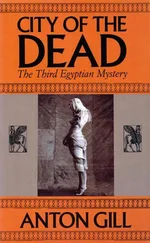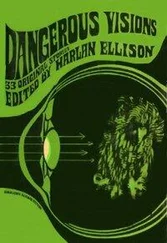In the adherent tissue just under the left eye of the first skull, Konig’s sharp gaze spies a deep-seated bruise, roughly an inch in diameter. Then a similar but smaller bruise on the lower border of the jaw on the left side. These bruises lead his eye down further to the place where that purple, swollen tongue, with its tip cut off, protrudes grotesquely just beyond the margin of the jaw. It is that tongue that really starts to tell the story.
The tip cut from the tongue is about an inch and a half in length. It seems to Konig that it had been removed to facilitate the extraction of teeth. If that is so, its removal is of importance as proof that the tongue protruded just at or immediately after the time of death.
Studying the tongue further, he notes that the contour of the palate is imprinted on both the upper and lower surface with indentations that correspond perfectly with the remaining dentition in the jaws. These indentations are shallow in front and become deeper toward the back of the tongue. Such marks can be made only when great pressure is exerted on the tongue for an uncommonly long time, and such a condition is sometimes found after throttling.
Immediately Konig is looking for the telltale bruising signs of manual strangulation. None are to be found in the soft tissue around the neck because this tissue has been stripped away, as if there had been a need to erase all evidence of throttling. But in some of the adherent tissue, Konig discovers several small half-moon impressions, suggestive of those caused by fingernails. He has only to examine next the hyoid bone in the throat to discover there the clean fracture going through it and to know finally that the neck had been forcibly compressed and that the poor, hapless owner of the skull he is now holding in his hand had died an asphyxial death from violent throttling.
Gazing at both heads now, Konig is struck again by the somewhat curious fact that the mutilation inflicted on the first head is so dramatically greater than that inflicted on the second. The owner of that first head, he reasons, must have been the real object of contention here. The rage and hate visited upon that head are simply, even to him, horrifying.
The time now is nearly 8 p.m., though Konig is not aware of that. Indeed, since the awful moment when he drove everyone from the autopsy room, locked the doors, and hurled himself into the task of reassembling the arms, he has been unaware of the passage of time.
The task before him now is purely anatomical. He must assign each of these heads to one or the other torso.
The first part is easy and is solved by simple observation. Attached to head Number 1 are four complete cervical vertebrae, with fragments of the fifth still clinging. Attached to head Number 2 are five cervical vertebrae.
The reconstructed trunk has two cervical vertebrae attached to its upper end; the partially reconstructed upper trunk has three. Since the normal number of cervical vertebrae is seven, it’s obvious to Konig that head Number 1 with its four vertebrae belongs to the partially reconstructed trunk with the three vertebrae and that head Number 2 with its five cervical vertebrae belongs to the reconstructed trunk with the two cervical vertebrae.
As with the reconstruction of the trunk, Konig’s next job is to bring the two parts together by articulating the lower vertebrae attached to the heads with the uppermost of the vertebrae attached to the trunks. This is delicate work and requires considerable time since he must match badly shattered fragments of these vertebrae, upper to lower, in order to verify that they come from the same source.
This he does with the wholly reconstructed trunk and discovers that these two cervical vertebrae appear to fit together very well in all details. He repeats the operation with head Number 1, matching it to the partially reconstructed upper trunk, and with the same success.
But Konig cannot be content with this kind of facile observation. He must now verify these articulations with X rays, and in order to do this, he spends the next few hours dissecting out the cervical vertebrae from both heads, as well as both trunks, cleaning them by maceration in order to display the margin of the bones. After that, he is ready to connect both sets in complete anatomical series.
The work is laborious and painstaking. He must sit hunched over for a period of several hours under bright lights and wield his knives. But this is not labor for Konig. Time goes swiftly for him. It flies. The anxiety and tension of his day simply fall from him like old sour clothing, and as he works far into the night, he feels not the slightest fatigue, only a kind of strange, heady exhilaration.
Somewhere along about 2 a.m., he’s back upstairs in the radiographic room with two completely reconstructed cervical sections, taking X rays of each.
In a matter of minutes, he has taken photographs of both cervical series, front and back views, and while waiting for them to develop, has a cup of stale coffee in his office, smokes one of his dark, noisome cigars, and scribbles more figures into his requisition budget for the Comptroller.
A short time later he is back upstairs padding through the shadowy halls of the large empty building, back to the radiographic room for the developed X-ray pictures of both sections.
Scanning the gray-white ghostly pictures on the illuminated screen, there is a sense of victory. They confirm what he has known all along. Both sets of vertebrae fitted together give the general appearance of anatomical harmony, a harmony that becomes more and more pronounced to his trained eye.
“Marvelous,” he whispers to himself almost reverentially, studying the clear, beautiful articulations between these long links of vertebrae and discs. “Goddamn marvelous—what a goddamn marvelous miracle of engineering.”
With a small shock of amazement, he realizes that it’s nearly 3 a.m. Hastily he starts to scribble notes onto his pad preparatory to writing his longer, more elaborate protocol.
“…Radiograph 3 shows seven cervical vertebrae present—five in upper part removed from head Number 2—”
“ Why can’t you be like other men? Come home at night for supper. She’s been asking for you all day — hasn’t seen you once this week —”
“—and two attached to the trunk—so that the bones of the upper vertebrae match the bones of the lower in anatomical detail, including bone texture, making them appear to be in perfect—”
“ I’m not like other men . ”
“—and proper sequence—that portions of intervertebral disc between 5th and 6th vertebrae exhibit cut anc torn surfaces with reciprocal features, making it highly probable that the portions adhering to the two vertebrae—”
“ You know what she said today? She said ‘Daddy is dead.’ I overheard her telling her friends. She said you’d died and left us all alone . ”
“—were part of the same intervertebral disc.”
“ Go upstairs now and say good night to her. ”
“ Good night? For Christ sake, Ida, it’s two A.M. ”
“ I don’t care what time it is. She’s up. She’s waiting. Now you go up there and let her see you. For God’s sake go up there. ”
“The plane of severance between head Number 2 and reconstructed trunk passes not quite cleanly through the junction of the larynx and trachea—”
“ Paul—I want you to take that job in Rochester. ”
“—between the cricoid cartilage of the larynx and the first cartilaginous ring of the trachea—”
“ And sit on my ass for thirty years in some university teaching a lot of —”
“—both showing signs of damage, so that not only did cut surfaces fit each other exactly, but on each there was found an attached—”
Читать дальше












